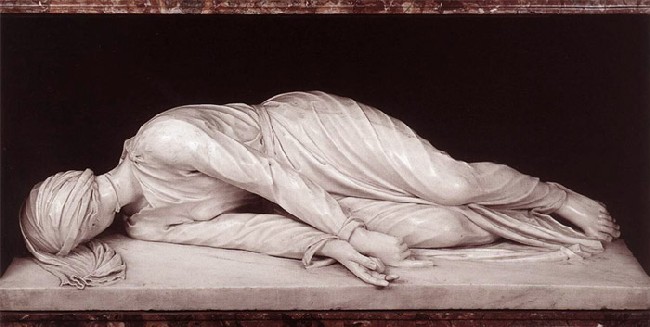
Ordinary Time in the Church’s liturgical (public worship) calendar consists of two blocks of time:
1) the weeks from Epiphany to Lent, andHaving just celebrated Pentecost, we now enter the second period of “Ordinary Time.” But ordinary does not mean common or dull. It means “numbered” as in “ordinal.”
2) the weeks from Pentecost to Advent.
These two blocks of numbered weeks can be 33 or 34 weeks long depending Easter’s date.
In the past these two time periods separating those parts of the calendar with special names were ordinarily called the "Season after Epiphany" and the "Season after Pentecost."
In 1969 after Vatican II these seasoned terms were replaced with the often misunderstood term of Ordinary Time.
Green is the liturgical color of Ordinary Time to help symbolize a time of life and hope.
I do not know why the names on the calendar — "Season after Epiphany" and the "Season after Pentecost" — were changed. If I had been the one to send in the order to the office supply store for new Catholic calendars in 1969, I would have simply placed the same order as before. Both "Season after Epiphany" and the "Season after Pentecost" have a nice ring to them. But in 1969, if someone had wanted to take one small step along with Neil Armstrong or celebrate a new time of peace, love and music with 500,000 friends, they might have wanted to make a change — but to Ordinary?
So, with the 40th anniversary of the 1969 liturgical calendar and even though we know that “ordinary” refers to numbered weeks, maybe Ordinary Time deserves a different name. Ready to change the name?
What about a new name for Ordinary Time that better suits these weeks? Should the focus on “numbering” weeks be shifted to a focus on and reminder of how those 34 weeks are, in fact, closely tied to what took place earlier in the liturgical year and how they draw us to what is coming up? Maybe Ordinary Time does that, maybe not.
If you want an out-of-the-ordinary new way to think about Ordinary Time, consider the following possible new names for Ordinary Time and then cast your vote in the newest just-for-fun Oblate Blog poll posted June 7.
What about calling these 34 weeks one of the following:
“Beatitude Time” to honor how we are to follow Christ’s teachings given in the sermon on the mount just as if we had been one of the large crowd who had heard Jesus begin, “Blessed are the poor in spirit: for theirs is the kingdom of heaven.”
“Emmaus Time” to honor Christ’s opening of our hearts to the Word of God.
“Trinity Time” to honor all three persons of the Godhead and the three great mysteries of the Church: the incarnation of Christ, the resurrection on Easter, and the bestowing of the Holy Spirit. At Christmas we are reminded of the work of God, at Easter we see the love of Jesus, and at Pentecost we know the power of the Holy Spirit. So how about calling these 34 weeks Trinity Time to honor all three persons of the Trinity together? Nothing ordinary about that.
“Designated Time” would borrow a useful baseball term to emphasize what theme the Church is designating for special attention and study during that year. For example, the Pope recently announced the Year of the Priest, so if we applied the concept of Designated Time, in 2009 this time period until Advent would be called “Priests’ Time” to honor a special designation for this year and the designation would change each year. But maybe there is another name that would be a better replacement.
“Virtue Time” would honor both the theological and cardinal virtues. Theological virtues (faith, hope, charity) are gifts of God rather than the result of human efforts. Cardinal virtues which can be the product of human effort are prudence, justice, fortitude, and temperance. The joining of God’s work (Theological Virtues) to our own efforts (Cardinal Virtues) might help us see how all parts of the liturgical year are connected just as the work of God and our own dedicated wills are combined in a virtuous life.
I like “Virtue Time” but if the Pope likes it too and we start seeing it on 2010 calendars, I imagine that 40 years from now, a new generation of people will be calling it “Virtual Time” and getting confused all over again. They will ask why do we call it Virtual Time? Is it not real? They will yearn for the good old days when these 34 weeks had enough substance to be called ordinary.
While the seasons change, we are called to a life of praying without ceasing — a life of joy 24/7/365.
And Oblate Blog readers are invited to vote in the “Rename that Ordinary Time” Poll on the right sidebar of this blog until June 20, 2009.
________________________
Footnotes:
The picture is "Navigation" by jurvetson. Thank you.
Neil Armstrong. On July 20, 1969, Armstrong and Aldrin landed on the moon. Neil Armstrong checked his day planner. It read, “One giant leap for mankind.”
500,000 friends. On August 15 to 17, 1969, at Woodstock, on a New York farm, the music came from: Joan Baez, Arlo Guthrie, Tim Hardin, Incredible String Band, Ravi Shankar, Richie Havens, Sly and the Family Stone, Bert Sommer, Sweetwater, Quill, Canned Heat, Creedence Clearwater Revival, Jefferson Airplane, The Who, Grateful Dead, Keef Hartley Band, Blood, Sweat and Tears, Crosby, Stills & Nash (&Young),Santana, The Band, Ten Years After, Johnny Winter, Jimi Hendrix, Janis Joplin, Joe Cocker, Mountain, Melanie, Sha-Na-Na, John Sebastian, Country Joe and the Fish, and the Paul Butterfield Blues Band.









No comments:
Post a Comment